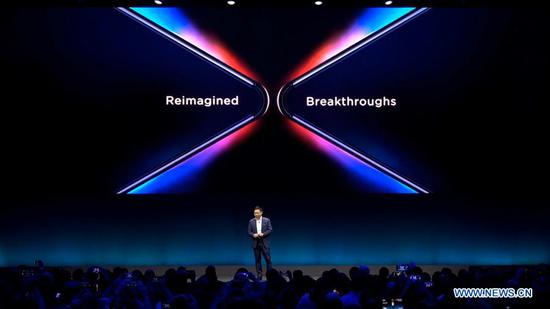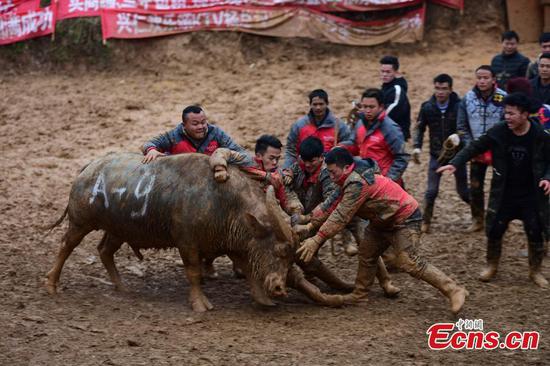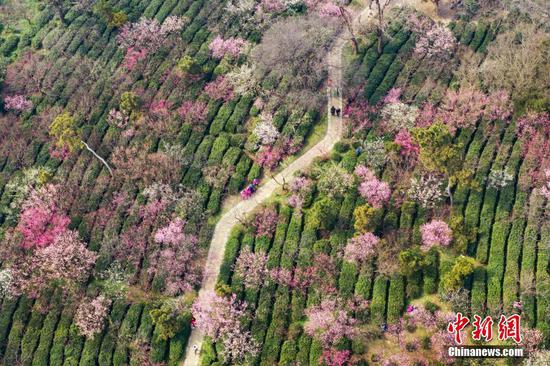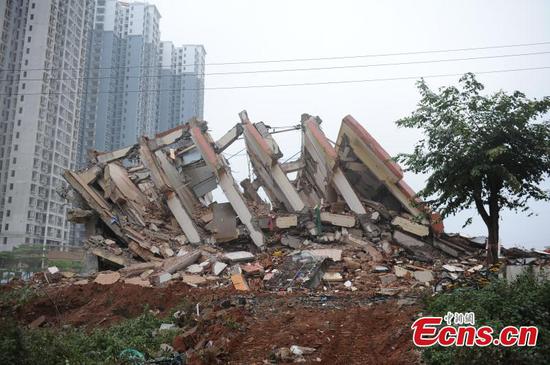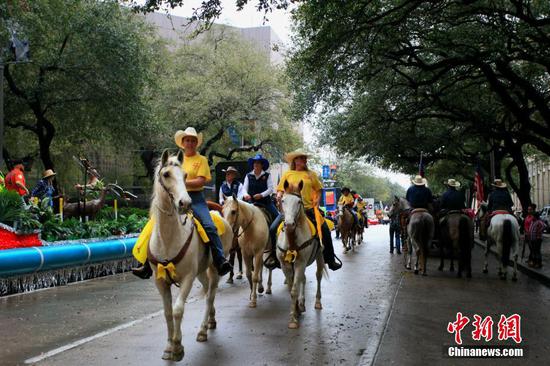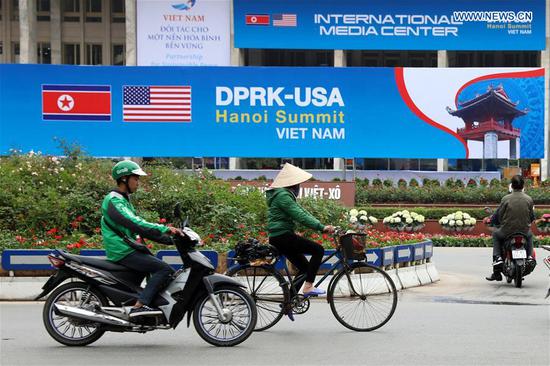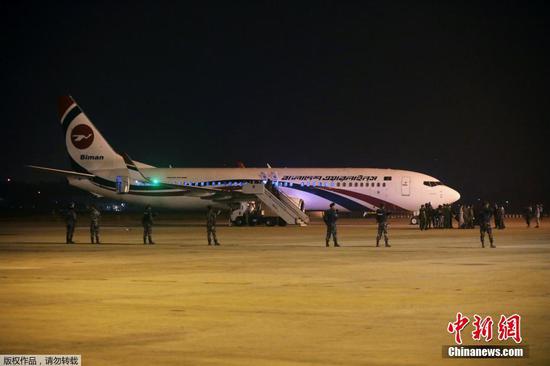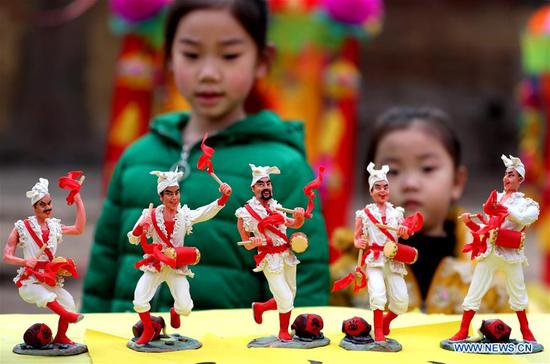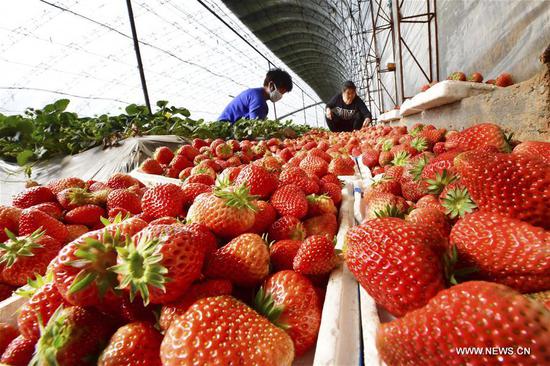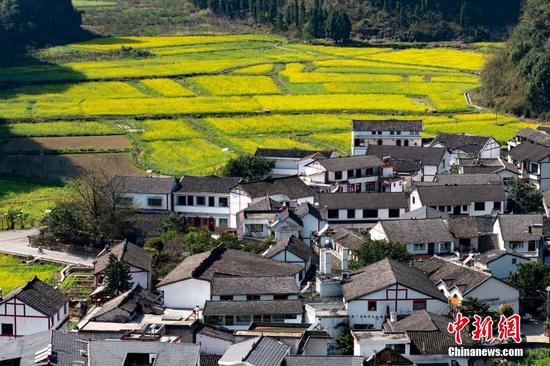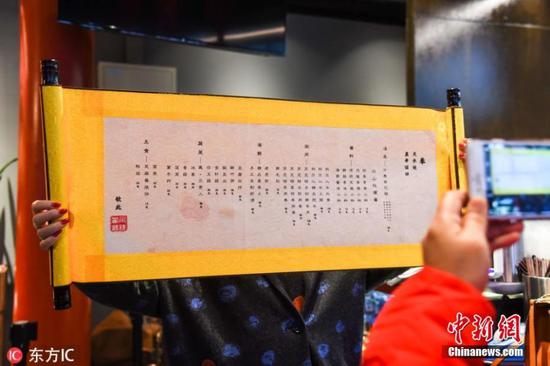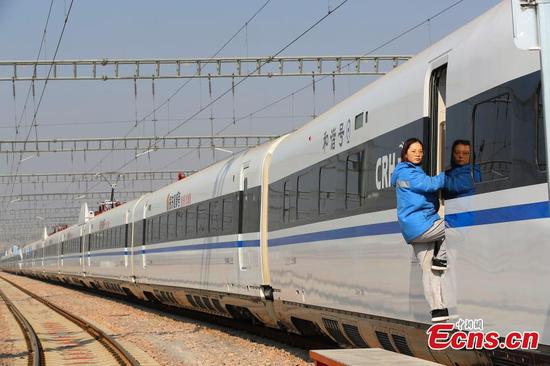
Citizens ride in Rongcheng County of Xiongan New Area, north China's Hebei Province, March 29, 2018. (Xinhua/Mu Yu)
What will Beijing be like as China is developing rapidly to become a modernized country? And how will the capital city spearhead regional development and blaze a new trail of balanced, high-quality growth?
These questions, among others, were on the minds of China's decision-makers when the country initiated a key strategy in 2014 to coordinate the development of Beijing, its neighboring port city Tianjin, and Hebei Province -- a regional city cluster called "Jing-jin-ji."
"The core of integrated development of 'Jing-jin-ji' lies in the concepts of optimization, adjustment and streamlining, all for the sake of pursuing healthier development," said Li Xiaojiang, a member of the expert committee advising the coordinated development of the "Jing-jin-ji" region and former head of the China Academy of Urban Planning and Design.
Today, with a better economic structure, a cleaner environment and improved public services, the "Jing-jin-ji" region is exploring a new growth mode in densely-populated areas and becoming a model for urban-rural coordinated development for the rest of the country.
"With the same objective and coordinated measures, the three places have complemented each other's advantages in a mutually beneficial manner and made steady progress toward achieving a new mode of coordinated growth," said a senior official with the National Development and Reform Commission, the country's top economic planner.
NEW WINGS TO BEIJING
A prominent task of the "Jing-jin-ji" strategy is to move the non-capital functions out of Beijing to treat "urban ills" in the Chinese capital, such as traffic jams and pollution.
According to a guideline released in April 2015, the key functions of politics, culture, international communication and technical innovation will be prioritized, while other sectors will be moved out of Beijing.
Measures to clear space in Beijing include the closing of manufacturing businesses and the relocation of hospitals and schools. In 2018, a total of 656 manufacturing companies in the city were shut down, and more than 200 markets and logistics centers were relocated, according to Beijing Mayor Chen Jining.
In 2019, more than 300 manufacturing firms and 66 markets and logistics centers, usually high-polluting or low-end industries, will be phased out or moved to nearby regions.
Another major move was shifting administrative departments of the Beijing municipal government to Tongzhou District in the city's eastern suburbs.
In January this year, four key municipal organs of Beijing moved their offices from the downtown area to Tongzhou. The sub-center aims to accommodate 1.3 million permanent residents by 2035, according to a detailed plan for the sub-center's development approved by the central authorities.
Wang Kai, vice president of the Chinese Academy of Urban Planning and Design, hailed the development of the sub-center as an important step for regional development, stating that many metropolises around the world have planned and built sub-centers to realize sustainable development.
While Tongzhou has accommodated the administrative departments of the Beijing municipal government, Xiongan in Hebei Province will be the location for many of Beijing's non-capital functions and relocated population.
In April 2017, China announced the establishment of the Xiongan New Area, which, about 100 km southwest of Beijing, spans three counties in Hebei.
According to a master plan published in April 2018, Xiongan is another new area of "national significance" following the Shenzhen Special Economic Zone and Shanghai Pudong New Area. It will be a new home for Beijing's colleges, hospitals, business headquarters, and financial and public institutions.
Often billed as China's "city of the future," Xiongan has been designed to become a zone for innovation, a digital city synchronized with a brick-and-mortar one, and a livable and business-friendly area.
Chinese planners envisioned that by the middle of the century, Xiongan would become a significant part of the world-class "Jing-jin-ji" city cluster, effectively performing Beijing's non-capital functions.
"Xiongan and Tongzhou are adding two new 'wings' to Beijing, and providing a Chinese solution to big city malaise," said Wu Hequan, deputy head of the expert committee advising the coordinated development of the "Jing-jin-ji" region and academician at the Chinese Academy of Engineering.












